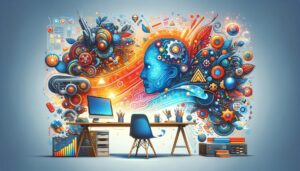Once upon a time, developing new products required extensive prototyping and manufacturing processes that were costly. Thanks to 3D printing technology, companies can now rapidly create iterations of designs before moving forward into full production. Consumers now have access to customized-fit shoes or unique jewelry pieces tailored specifically to their preferences, while artists can use this technology to craft intricate works of art that captivate audiences.
1. It’s Faster
3D printing allows businesses to rapidly transition from a computer-aided design (CAD) file to a physical prototype, facilitating faster iterations and product development time, as well as more cost-effective market testing, as physical models can be shown directly to potential customers and investors.
3D printing stands out as an eco-friendly alternative to manufacturing processes like milling, forming, and casting that involve metal waste. 3D printing helps reduce inventory costs while simultaneously meeting sustainability goals through reduced material waste. Print speed increases can decrease overall printing time and labor costs while simultaneously saving energy and lowering energy consumption. Unfortunately, high-speed printing may increase wear and tear on parts, which in turn leads to more frequent replacement costs and maintenance expenses.
2. It’s More Affordable
As technology advances, 3D printing becomes more cost-effective and versatile for users. Models can now be created with computer-aided design (CAD) software or using mobile apps like Autodesk 123D Catch to scan photos, drawings, and documents into digital forms for printing.
Rapid prototyping reduces product development costs by eliminating costly tooling and manufacturing processes, while direct manufacturing increases value delivery by bypassing the traditional distribution stage. Home fabrication offers consumers more choices and could result in radical business model innovation by empowering them to directly produce their end products. This trend has already begun, as Maplin, a UK electronics store selling personal 3D printers and printing materials in-store, is already an example.
3. It’s More Versatile
As with regular digital printing, 3D printing uses layering material until an object forms. Material choice is critical; engineers often prefer materials with high heat resistance and tensile strength, while architects prefer models printed with high-quality finishes and accurate resolutions.
Due to 3D printing’s design flexibility, it’s also easier than ever before to modify prototypes – something that can help with product development while simultaneously lowering production costs. Furthermore, 3D printing helps businesses cut maintenance costs and save time with replacement parts for older machinery – thus helping reduce maintenance expenses while saving on time spent maintaining them.
4. It’s More Reliable
3D printing provides businesses with an efficient means to rapidly modify prototypes, saving both time and money. Unlike subtractive manufacturing techniques that use machines to cut away at solid material, 3D printers build layers of material layer by layer and can produce multiple parts simultaneously.
Engineers using 3D printing technology are capable of creating intricate geometries and designs not possible with traditional machining processes, including internal voids that reduce materials costs as well as manufacturing costs. Companies can now 3D print replacement parts on demand, decreasing downtime and costly repairs. This technology is especially helpful for manufacturing equipment. Some businesses store digital files of spare parts so that they can be quickly manufactured in case of emergency.
5. It’s More Sustainable
3D printing allows products, prototypes, and parts to be produced locally rather than shipped from remote locations – eliminating warehouse costs while simultaneously decreasing energy use and environmental impacts associated with shipping energy use.
Traditional petroleum-based plastics are not biodegradable and contribute to long-term environmental pollution, such as the Great Pacific Garbage Patch and marine pollution in general. But PLA and ABS filaments made from renewable resources or recycled ocean plastics offer environmentally friendly additive manufacturing solutions. Parametric design combined with 3D printing also helps maximize material use efficiency by tailoring models specifically to each print run. This reduces wasteful usage and raw material usage – cutting energy usage along the way!
6. It’s More Social
As 3D printers become more affordable, consumers are increasingly becoming prosumers who modify mass-produced products after purchasing them – known as “lead user innovation.” This process includes everything from hacking and tinkering to designing customized versions of original items, which enhance performance.
Makerspaces, shared community spaces where digital fabrication tools like 3D printers are readily available for use, often have 3D printers for public use. 3D printers also find applications in academic environments where students use them to turn abstract concepts into tangible models ranging from historical artifacts and complex geometries to cross-sections of human organs.
This research has demonstrated that both SWD and SWOD appreciate cooperative learning through the implementation of 3D printers and would like to continue this learning approach in the future. Unfortunately, however, some SWODs are prone to negative verbal and non-verbal interactions with their disabled peers, which merit further examination.
7. It’s More Collaborative
3D printing allows teams to work remotely, improving collaboration and productivity while helping companies produce products quickly and efficiently, cutting production times and costs significantly. Teachers use 3D printers to provide tangible objects that enhance student engagement and learning. For instance, teachers could create graspable topographical maps to help their students comprehend topics studied during class time.
Behavioral ecologists can also utilize 3D printing technology for studies that would otherwise be difficult or impossible using traditional methods, such as studying northern map turtle mating behavior without risking the lives of actual animals. This allows researchers to address various concerns related to environmental preservation and sustainability without risking the lives of endangered creatures.
8. It’s More Sustainable
3D printing can reduce costs while being more sustainable than traditional manufacturing techniques, using materials only when necessary, thus eliminating waste and mitigating environmental impacts. Utilizing 3D printers for on-demand production reduces energy use from shipping products directly to their destinations and eliminates warehouses altogether, thus contributing to a shift toward distributed or decentralized manufacturing.
3D printers offer another sustainable advantage, working with biodegradable plastics and recycled materials that support environmental goals. Repurposed materials like ocean plastics and wood-based polymers help reduce reliance on virgin raw material while contributing to less waste and plastic pollution. 3D printing also makes design modifications simpler, speeding product development and decreasing risks.




